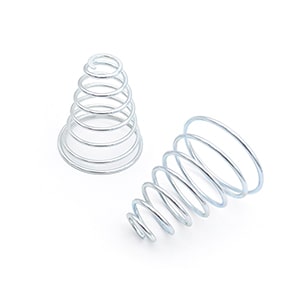Get unique, complex parts easily. No matter your requirements, Chaoyi Spring creates hard-to-produce coil springs and wire forms.
Let us help you create the custom wire form you need, from S-hooks and J-hooks to utility hooks and more.
We work closely with customers across a wide range of industries, helping them design and manufacture made-to-order parts.
Why choose Chaoyi Spring? We prioritize customer-focused collaboration, modern equipment and the latest technology to make your parts per print.
Find the information and guidance you need, from measuring a spring to learning about materials, placing an order and much more.
RDU wave springs, also known as wave washers, are a specialized type of spring that offers numerous advantages over traditional coil springs. These springs are renowned for their high load


RDU wave springs, also known as wave washers, are a specialized type of spring that offers numerous advantages over traditional coil springs. These springs are renowned for their high load capacity, compact size, and exceptional fatigue resistance, making them ideal for various applications. In this article, we will delve into the intricacies of RDU wave springs, exploring their design, working principles, and diverse applications. We will also discuss the benefits they offer and compare them to other types of springs, providing a comprehensive understanding of their capabilities.

RDU wave springs, often called wave washers, are a type of spring that's different from traditional coil springs. They have a unique, wave-like shape, which lets them store energy and provide a restoring force. The name "RDU" comes from the company that originally developed these springs, the "R" being for "Radial" which refers to the way the waves are oriented. Wave springs are made from flat, specially shaped metal strips that are stacked together and secured with an outer retaining ring.
The distinctive wave-like shape of these springs is crucial to their functionality. The waves are designed in a way that lets them deform elastically under load. When a force is applied to the spring, the waves compress, storing energy. When the force is removed, the stored energy pushes the waves back to their original shape, restoring the spring to its original length.
RDU wave springs offer several advantages over traditional coil springs, making them a preferred choice in many applications:
RDU wave springs are incredibly versatile and can be used in a wide range of applications. Here are some common examples:
The material used for wave springs is crucial to their performance and longevity. Common materials include:
Designing wave springs requires careful consideration of factors such as:
RDU wave springs are highly specialized and effective springs that offer several benefits over traditional coil springs. Their compact design, high load capacity, and exceptional fatigue resistance make them an excellent choice for a wide array of applications. When considering wave springs for your projects, carefully analyze the design parameters and material selection to ensure optimal performance and longevity. If you're looking for a reliable and efficient solution for your spring needs, RDU wave springs deserve serious consideration.
This article has provided a comprehensive overview of RDU wave springs, highlighting their advantages, applications, and design considerations. Their innovative design and exceptional performance characteristics make them a valuable addition to the world of spring technology. Whether you're an engineer, designer, or simply someone interested in the mechanics of springs, understanding RDU wave springs can expand your knowledge and enhance your problem-solving capabilities.
Browse some of the custom wire forms and springs that we manufacture. Don’t see what you need? We specialize in made-to-order products that meet your application requirements.
Visit Our GalleryNeed a custom wire form or coil spring? We make it work. Fill out the contact form and a representative will respond within 1 business day. If you have a PDF or CAD file, you can submit to request a quote.